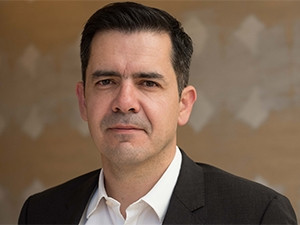
While there is a great deal of technical innovation in the healthcare sector, true digital disruption of the industry is still some way off.
This is the view of Valter Adao, lead director at Deloitte Digital Africa, who nevertheless told delegates at the recent Africa Health conference and exhibition in Midrand that true disruption is likely to be led by technology companies.
As an example, he cited Microsoft's involvement in cancer research. The Microsoft research effort is aimed at solving the cancer riddle with algorithms and computers instead of test tubes and beakers through collaboration between biologists and computer scientists.
While such disruptive breakthroughs are still some way off, intensive innovation within the healthcare sector continues unabated. Several fascinating developments which highlight the cross-over between the IT industry and healthcare were unveiled at the exhibition.
These included a cloud-based solution providing end-to-end care for cervical cancer sufferers; a world-first smartphone-based diagnostic hearing tool that helps to diagnose middle ear infection ? one of the leading causes of preventable hearing loss in the developing world; and the use of radio frequency identification (RFID) and real-time location services (RTLS) by hospital and care facilities not only to manage assets, but to improve the safety and security of vulnerable individuals in their care.
Cancer screening
Using SAP's technology platform, Heidelberg University in Germany has developed what it calls the Emerging Technologies in Cervical Cancer Screening (ETiCCS) solution. This identifies women at risk of cervical cancer and delivers end-to-end care. Information about each woman is stored in the cloud, so data entry is simplified, and data and test results are available immediately to medical professionals no matter where they are.
According to SAP Africa's MD: East Africa, Dr Gilbert Saggia, this solution is in line with SAP's drive to support healthcare systems in transitioning to digital healthcare by aggregating patient data from multiple sources to provide a single, accurate patient profile.
'Test your hearing' app
Meanwhile, the hearX Group, which provides affordable hearing health solutions via smartphone technology to people who traditionally do not have access to healthcare - including the provision of a free "test your hearing" app, launched the hearScope at the exhibition.
Hermien Louw, project manager at the hearX Group, explained this consists of a smart, user-friendly, mobile app and a pen-like otoscope (an instrument designed for visual examination of the eardrum and the passage of the outer ear) which is said to be more accurate than traditional otoscopes when combined with the capabilities of the mobile application.
Patient, infant tracking
On the RFID and RTLS front, Thembekile Asset Management Solutions introduced the Sanitag, a real-time location solution that enables the location of anyone wearing an RFID tag to be visually pinpointed on an easy-to-follow map while also allowing for motion sensing and inactivity monitoring.
Setting pre-defined patient boundaries, it can be used to prevent wandering for at-risk patients as well as for fall detection. An Infant Tracking Safety solution uses a mother/infant tag to help prevent mix-ups and kidnappings, while a Lone Worker Tracker provides for emergency worker tracking, which is not only important from a worker safety perspective, but - because the locale of emergency personnel is known - speeds up the response process for critical response teams.
It has also been tested by the Western Cape Government Emergency Medical Services for ambulance tracking and asset protection.
Share